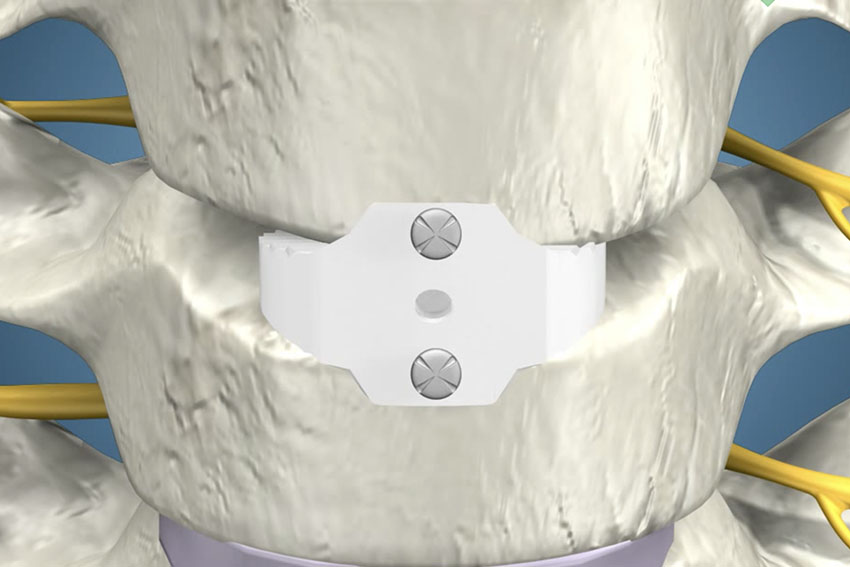
Cervical Spine Anatomy
The neck is made up of seven bones called cervical vertebrae. The vertebrae is made up of a square shaped body and U shaped back which contains and protects the spinal cord. The vertebrae are separated by disks, which helps cushion the spine. The disk is made up of a tough outer shell (annulus fibrosis) and a soft gel-like center (nucleus pulposus). Think of a jelly donut.
Why do Disks Herniate?
As people age the spine slowly wears out through a process called degeneration. Degeneration is first seen in the disk in adults. The annulus weakens and bulge and tear, allowing the nucleus pulposus to squeeze out of the annulus into the spinal canal. The herniated disk may pinch the spinal nerves or spinal cord causing pain, numbness, tingling and weakness, paralysis or bowel and bladder dysfunction.This can be fixed with anterior cervical discectomy, fusion and plate (ACDFP).
Anterior Cervical Discectomy, Fusion and Plate
The patient is placed under general anesthesia. An incision is usually made on the right side of the front of the neck. The esophagus (food “pipe”), larynx and trachea (voice box and breathing “tube”) and carotid artery are separated apart to reach the front of the spine. The target disk level is found with x-ray. The disk is removed carefully under the microscope to decompress the spinal cord and nerves. To prevent the disk space from collapsing a bone plug is placed into the empty disk space to hold the vertebrae apart. The spine and bone plug are held together with titanium plate and screws to promote bone fusion.
Discharge Instructions
- Diabetics should strive for good post-operative glucose control. Poorly controlled sugar levels may increase risk of infection.
- Do not smoke or use non-steroidal anti-inflammatory drugs. They may interfere with bone fusion.
- Keep wound clean and dry. You may shower 2 days after surgery. Do not submerge your wound in the bath or pool for 2 weeks.
- Use neck collar or bone stimulator as directed by your doctor.
- No driving, twisting, bending neck for 2 weeks after surgery.
- Watch for the development neck swelling, difficult breathing, problems swallowing, change in your voice, fever, redness or drainage from the wound.
- Don't worry pain, numbness and weakness may require days to months to resolve.
- Call your doctor if you have any concerns.
